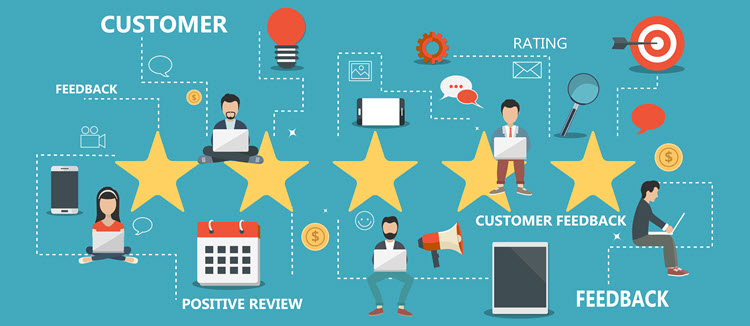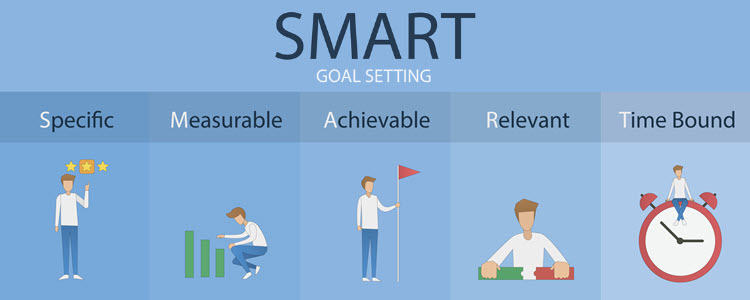Key performance indicators, or KPIs, are a set of metrics that provide crucial information on business performance and provide insights on how to grow an ecommerce store. But with dozens of potential KPIs, how do you decide which ones are relevant and which to ignore?
This article gives a comprehensive list of KPIs ecommerce merchants should keep an eye on.
What Is KPI in Ecommerce?
Ecommerce KPIs, or key performance indicators, are measurements of the performance of a business that tell a story of how an ecommerce company, or a particular segment performs. They can be used to monitor any aspect of the business, such as sales growth, marketing performance, or customer support quality.
In essence, KPIs are those metrics considered important enough to warrant frequent monitoring and analysis.
Why Are KPIs Important?
Measuring KPIs is the first step to improving a business, as it takes out the guesswork from determining what segment is underperforming. Judging performance through KPIs also provides a point of reference for assessing progress.
For example, if a company wants to increase annual sales by 15%, it should start tracking monthly sales growth. If progress is slow, a company may realize its objective is out of reach and readjust plans to suit the situation.
To analyze why monthly sales are underperforming, the same company could start tracking marketing KPIs and discover that their website has a high bounce rate or that sales for a specific product are not growing and need an advertising boost. Similarly, they might realize the product return rate has increased over six months, which could indicate a manufacturing issue.
By tracking KPIs, a company uncovers undetected problems, and spots patterns and trends that help make informed decisions.
25 Essential Ecommerce KPIs
Some ecommerce KPIs focus on a company's overall performance, while others concentrate on specific processes, products, and productivity. Most can be automatically calculated and monitored by ecommerce analytics tools.
Below you will find 25 crucial ecommerce KPIs, categorized into three segments:
- Sales
- Marketing
- Customer Service

Sales KPIs
1. Sales Growth
The sales growth metric measures the increase or decrease in the number of sales over a defined period. It is perhaps the most important metric to monitor and a critical indicator of a healthy business.
Regularly tracking and analyzing sales growth means you can quickly spot problems, act on trends, and establish targets to motivate your sales team. The formula for calculating sales growth is:
Monthly/ Quarterly/ Yearly sales growth = (Sales for the period - sales for the prior period) / sales for the prior prior) x 100
2. Average Profit Margin
The average profit margin calculates the average profit generated from selling a product or service. As a business and revenue grow, profit margins should stay roughly the same or increase. If they decrease, you have a problem that you should urgently solve.
The average profit margin metric can be upscaled or downscaled to measure the profitability of products, markets, and sales personnel. The formula for the average profit margin is:
Average profit margin = (Net income / Revenue) x 100
Note: Read in-depth about markup percentage and gross profit margin, two important ecommerce accounting terms.
3. Average Order Value (AOV)
AOV measures the average amount customers spend per order.
By setting a free shipping threshold based on the AOV, encourage customers to spend more. If the current AOV is $100, you can set the free shipping threshold to $120 and encourage customers to spend the extra $20 to save money with free shipping. The formula for average order value is:
Average order value = Revenue / Number of orders
4. Customer Lifetime Value (CLV)
CLV is the average amount of revenue a company can expect to earn from a customer during their business relationship. Keeping existing customers is more cost-effective than acquiring new ones and this KPI measures customer retention and customer stickiness.
If your CLV is low, customers are not making repeat purchases, and you might need to shift your marketing focus from customer acquisition to customer retention.
To calculate CLV, multiply the average order value by the average number of transactions in a given time frame (i.e., retention period).
Customer Lifetime Value = Average Order Value x Number of Transactions x Retention Period
Note: You can increase your marketing return on investment by reading our guide on the Six Customer Retention Strategies You Should Know About.
5. Inventory Turnover Ratio
The inventory turnover ratio measures how often a business can sell its entire inventory.
Selling aging inventory as fast as possible is crucial as the cost of carrying it increases while simultaneously the value of the inventory decreases. This metric also indirectly measures your organization's ability to generate sales and increase revenue. The formula for calculating inventory turnover is:
Inventory turnover ratio = (Average inventory / Cost of goods sold) x Days measured
6. Cart Abandonment Rate
The cart abandonment rate tracks the percentage of people who add items to their carts without completing a purchase.
A high cart abandonment rate is a red flag for issues like a complicated checkout process. To keep the cart abandonment rate as low as possible, ensure the checkout process is streamlined and caters to your customers’ payment preferences.
The formula for calculating the cart abandonment rate is:
Cart Abandonment Rate = (Completed purchases / Shopping carts created) x 100
Note: CCBill’s FlexForms solution enables merchants to tailor their checkout to their customer’s needs, reducing cart abandonment rates.
7. Customer Churn Rate
The churn rate measures the percentage of customers who stop doing business with a company or cancel a subscription. A low churn rate is preferable, as it shows the company has a base of satisfied, recurring customers.
Every business experiences some customer churn. However, it is vital to understand how and why customers leave. The churn rate formula is:
Customer Churn Rate = (Lost Customers / Total customers at the start of period) x 100
Note: To keep customers by your side, read our practical guide on How to Reduce and Prevent Churn.

Marketing KPIs
8. Total Visits
The total visits metric measures the total traffic your shop gets over a given period. Total visits are a yardstick for assessing overall marketing performance, especially relative to sales.
Even though it is a relatively simple metric, the total number of site visits offers a snapshot of your site's popularity and whether it is growing or shrinking. The more visitors, the better, as more eyeballs means more potential customers.
9. Unique Visitors
A unique visitor refers to someone who has visited your website once or twice but is counted only once in a selected period.
Tracking unique visitors and comparing them to the number of total visits reveals how much traffic comes from repeat visits compared to new visitors just discovering the shop.
10. Traffic Sources
The traffic sources metric measures what is driving traffic to your website, with the three main traffic sources being:
- Direct
- Referral
- Search (or organic)
By understanding where most of website traffic is coming from, you can optimize your marketing efforts to suit the highest-yielding channel or shift your attention to the ones where traffic remains low. Knowing where your strengths and weaknesses lie allows you to make the most of your marketing budget.
11. Conversion Rate
The conversion rate (CR) measures the total number of people who purchased an item versus the number of people who visited the online store. CR can be measured for an entire page or per category or a single product.
A conversion rate is one of the broadest marketing metrics because every aspect of the user experience can influence it. The conversion rate formula is:
Conversion rate = (Number of conversions / Total visitors) x 100
Note: To learn how to convert visitors into buyers, read our 24 Ecommerce Conversion Rate Optimization Tips.
12. Bounce Rate
A bounce rate is the percentage of people who leave a webpage without clicking on a link or making a purchase – usually within second.
A high bounce rate is a cause for concern, as it suggests an underlying issue with the customer experience. It is critical to keep the bounce rate of your page as low as possible because Google demotes the search engine ranking and domain authority of pages with high bounce rates.
13. Exit Rate
The exit rate is often confused with bounce rate. While both refer to the percentage of people who left a page, the exit rate includes visitors who interacted with the website.
Ideally, the "thank you for buying" page should have the highest exit rate, while a high exit rate on the checkout page is a red flag. The exit rate formula is:
Exit rate = Number of exits / Number of views
14. Click-Through Rate (CTR)
The click-through rate is measured by dividing the number of times a search result, ad, or email is clicked by the number of impressions (i.e., times it was seen). Google prioritizes pages with a good click-through rate.
There is no universally good click-through rate, as figures heavily depend on the industry. However, a low or falling CTR indicate you are targeting the wrong audience or are not persuasive enough to convince visitors to click.
The formula for calculating your click-through rate is simple:
Click-through rate = Clicks / Impressions
Note: To get the big picture on how modern ecommerce marketing works, check out our article on the 14 Best Ecommerce Marketing Strategies.
15. Average Session Duration
The average session duration is a simple engagement metric that measures the average length of time customers stay on your website. The longer they stay – the more pages they read, and ultimately the greater the chance they will buy.
The average session duration might not tell you much on its own but provides insight into your website's overall performance when measured against other relevant metrics such as the bounce rate.
16. Cost Per Acquisition (CPA)
The cost per acquisition metric measures how much it costs to guide a single person from the first touch point to the final conversion.
CPA is handy for getting a bird's eye view of the efficiency of your marketing efforts. It is calculated by taking the total marketing expenditures and dividing them by the number of sales over the same period.

Customer Service KPIs
17. Average Resolution Time
The average resolution time measures the time it takes support agents to solve all complaints.
This metric can also be used to measure the average resolution time per agent. An increasing average resolution time signals a problem with the support team or the product. The formula for calculating average resolution time is:
Average Resolution Time = Total resolution time for all complaints solved / Number of complaints solved
18. Customer Satisfaction Score (CSAT)
The customer satisfaction score is a key indicator of your business performance and product quality. You can obtain this information through a simple survey that asks customers how satisfied they are with the shopping experience on an arbitrary scale.
An advantage of CSAT is its simplicity. You can ask it at any point during the customer's journey to get an idea of where potential bottlenecks are.
19. First Response Time (FRT)
The first response time is the average time it takes a customer support agent to respond to a customer's case. FRT is calculated by taking the total of first response times and dividing it by the number of cases resolved.
Keeping FRT as short as possible is vital in increasing customer satisfaction and reducing the chance of a negative shopping experience. FRT can be shortened by automation, adequate training of customer support agents, and diversifying communication to provide omnichannel support.
Note: : One way to always be available to your customers is by implementing chatbot technology. For more on this, refer to our article Ecommerce Chatbots: How to Use Them to Boost Ecommerce Salesa.
20. Customer Service Email Count
The customer service email count measures the number of emails the customer support team receives. Emails are especially important to ecommerce stores, as they are the go-to method for customer complaints.
This metric must be monitored together with overall sales because the more goods a store sells, the more complaints it will receive. A rising number of emails is a cause for concern only if it outpaces sales growth.
Note: Learn how to track your email marketing success in our article 14 Email Marketing KPIs To Track.
21. Reasons For Contact
The reasons-for-contact metric relies on the ability of the business to catalog and quantify customers' reasons for contacting a support agent.
Although it can be time-consuming for larger ecommerce stores, sorting customer complaints can often provide critical insight into why customers are unhappy with their purchases.
22. Active Issues
Monitoring the number of issues the customer support team is actively dealing with is helpful because if problems are solved immediately, the number will not be high.
If the problems are not resolved, there might be a growing number of unhappy customers and a potential issue with the product.
23. Resolved Issues
Tracking the number of resolved issues can identify problem areas and help stay on top of negative trends.
By monitoring resolved issues you can provide solutions to the most common problems through FAQs, thus improving your help pages. Helping customers resolve issues independently frees up the customer support team's time for more complex issues.
24. Hit Rate
The hit rate KPI measures the number of customers who contact the customer service team about a specific product. You can also compare the hit rates of different products to find the most problematic ones. The formula for calculating a hit rate is:
Hit rate = Total number of sales of a single product / Total number of customers with complaints about the product.
25. Net Promoter Score (NPS)
NPS is a market research metric based on a single survey asking respondents to rate their likelihood of recommending a company, product, or service to a friend. Respondents give a rating between 0 and 10 and, depending on their response, fall into one of 3 categories: promoters, passives, and detractors.
An advantage of NPS over similar customer satisfaction surveys is that it can measure customer loyalty while still being simple and easy to execute. A downside is that customers must be willing to participate, which automatically filters out more of the passives.

How to Choose the Best KPIs for Your Business?
There are no ironclad rules for choosing the best KPIs to track. You need to find the ones that suit your business the best.
Here are the guiding principles you should follow.
Tip 1: Align KPIs to Your Strategy
You should tailor your KPIs to your priorities. Make a list of what you want to achieve next year and choose the KPIs that directly correlate with those goals. For example, if your goal is increasing sales by 20%, break that down into smaller bite-size targets like increasing your conversion rate by 4% or growing site traffic by 10% in the next six months.
Additionally, choose those KPIs that align with your business's life cycle and update them over time. Metrics centered around customer feedback might be more important to a new business while being less valuable to established companies focusing on monthly recurring revenue and customer retention.
Tip 2: Be Selective About What is Important
Rather than tracking all the metrics you can, focus on the ones that matter the most. Less is more when it comes to measuring and reporting KPIs.
A business generally does not need to monitor more than ten, and anything between three and eight is optimal. Being laser-focused on the KPIs that matter is more important than measuring everything.
Tip 3: Avoid Vanity Metrics
A common mistake is tracking vanity metrics, like the number of downloads for a free app or social media followers.
While these vanity metrics might make your business look good, they do not indicate market success nor provide helpful insight. Vanity metrics can also be misleading. For example, many app downloads could be due to recent marketing promotions and not widespread organic usage or popularity. Also, consider that many of these users will never become paying customers.
Tip 4: Choose Actionable KPIs
An actionable KPI is one that, when measured and acted upon, leads a business towards improvement. By having an end goal in mind, you are not just measuring KPIs as a standalone metric but as an indicator that informs decisions and impacts future strategies.
Additionally, the KPI must be grounded in factors that the business can control. If the parameters that impact the KPI are out of the company's control, then the KPI is not actionable. The bottom line is that the KPI should be structured and presented in a way to stimulate meaningful action; otherwise, its use is limited.

Conclusion
KPIs are an opportunity to better your business by getting a deeper understanding of what makes it function. However, to get the most out of monitoring KPIs, you must know which ones to focus on.
Determine what is unique about your business and be deliberate and thoughtful in choosing how to reliably quantify these elements. Grounding your KPIs in your company's strengths, weaknesses, short- and long-term objectives will pay dividends.
When you eventually decide which KPIs to track, develop a process to check them regularly. Measuring and analyzing KPIs cannot be done with spreadsheets, and modern businesses use various tools to capture the most up-to-date information.
Finally, remember to regularly assess if the KPIs you are tracking are still relevant to your objectives, as even the best KPIs become obsolete as your company grows and develops.